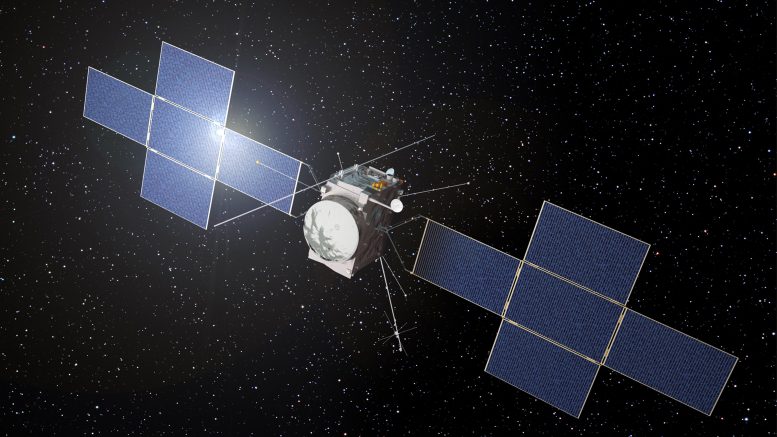
ESA’s Jupiter Icy Moons Explorer, Juice, will make detailed observations of the giant gas planet and its three large ocean-bearing moons – Ganymede, Callisto, and Europa – with a suite of remote sensing, geophysical and in situ instruments. The mission will characterize these moons as both planetary objects and possible habitats, explore Jupiter’s complex environment in-depth, and study the wider Jupiter system as an archetype for gas giants across the Universe. Credit: ESA
Juice spacecraft’s RIME antenna, designed to study Jupiter’s icy moons, has been successfully deployed after overcoming a stuck pin issue with the help of a mechanical device.
More than three weeks after efforts began to deploy Juice’s ice-penetrating Radar for Icy Moons Exploration (RIME) antenna, the 16-meter-long boom has finally escaped its mounting bracket.
During the first attempt to extend the folded-up antenna, only the first segments of each half were deployed. Flight controllers suspected that a tiny stuck pin jammed the other segments in place.
Fortunately, the flight control teams at ESA’s mission control center in Darmstadt had lots of ideas up their sleeves.

On May 12, RIME was finally jolted into life when the flight control team fired a mechanical device called a ‘non-explosive actuator’ (NEA), located in the jammed bracket. This delivered a shock that moved the pin by a matter of millimeters and allowed the antenna to unfold. Credit: ESA/Juice/JMC, CC BY-SA 3.0 IGO
To try to shift the pin, they shook Juice using its thrusters, then they warmed Juice with sunlight. Every day the RIME antenna was showing signs of movement, but no full release.
On May 12, RIME was finally jolted into life when the flight control team fired a mechanical device called a ‘non-explosive actuator’ (NEA), located in the jammed bracket. This delivered a shock that moved the pin by a matter of millimeters and allowed the antenna to unfold.
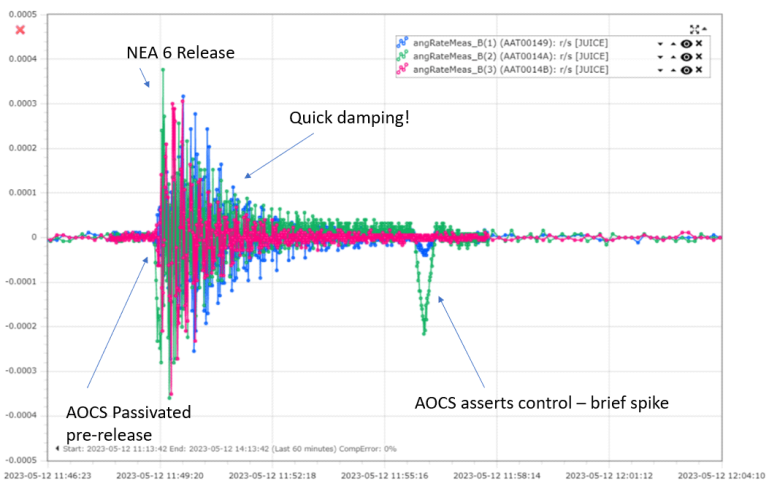
This graph shows the mechanical shock delivered by the firing of the actuator in the mounting bracket. The actuator was fired at the moment labeled ‘NEA 6 Release’. The resulting damping oscillation indicates that the antenna is released and then wobbles back and forth before stabilizing into an extended, locked position. Credit: ESA, CC BY-SA 3.0 IGO
The image below shows the mechanical shock delivered by the firing of the actuator in the mounting bracket. The actuator was fired at the moment labeled ‘NEA 6 Release’. The resulting damping oscillation indicates that the antenna is released and then wobbles back and forth before stabilizing into an extended, locked position.
But a final part of the antenna remained folded. Confirmation that the RIME antenna was successfully deployed came only when the flight control team fired another actuator in the bracket, causing RIME to fully stretch itself out after months spent folded up for launch.
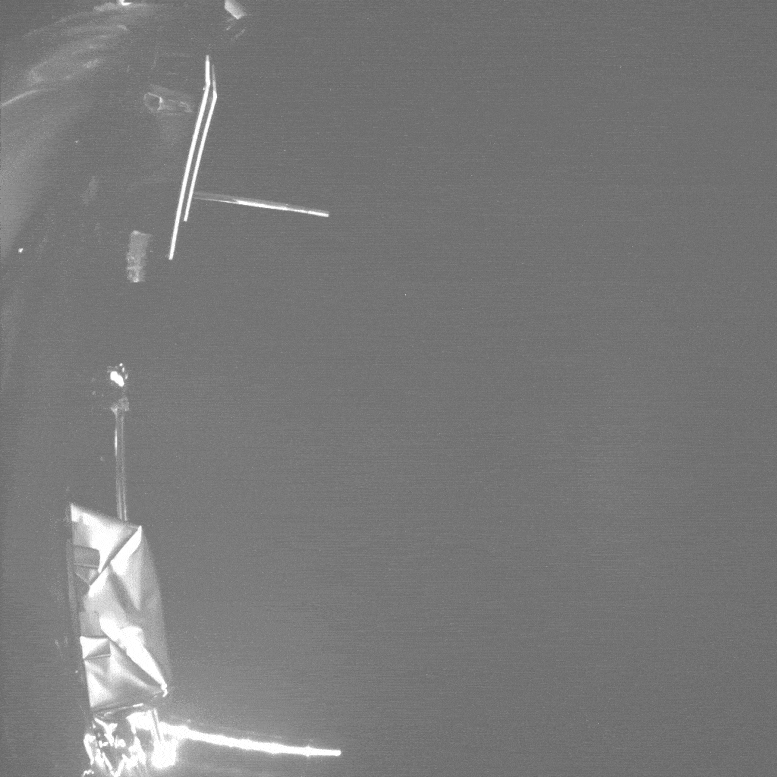
On May 12, RIME was finally jolted into life when the flight control team fired a mechanical device called a ‘non-explosive actuator’ (NEA), located in the jammed bracket. This delivered a shock that moved the pin by a matter of millimeters and allowed the antenna to unfold. Credit: ESA/Juice/JMC, CC BY-SA 3.0 IGO
Once ESA’s Jupiter Icy Moons Explorer (Juice) arrives at Jupiter, it will use RIME to study the surface and subsurface structure of Jupiter’s icy moons down to a depth of 9 km. RIME is one of ten instruments on board Juice set to investigate the emergence of habitable worlds around gas giants and the formation of our Solar System.

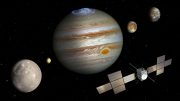


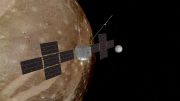


Be the first to comment on "Successfully Deployed: Juice Spacecraft’s RIME Antenna Finally Breaks Free"